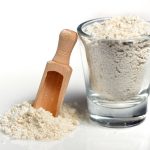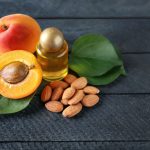
What is it ?
Corn (or maize) as it is known is a grain. The corn or maize kernel is the fruit of the corn and these are attached to a spindle known as the cob. We use the starch in kernels in cooking as a food, mostly as a vegetable but also for popcorn, or as a source of raw starch or even as a biofuel. The extracted starch is also a source of sugar and is used for bioplastics.
From time to time you might hear the term ‘ears’ of corn. That word ‘ear’ comes from an ancient word called ‘ahs’ which means husk of corn. You might also hear ‘pole’ for cob. Each ear of corn is wrapped in a husk. This husk is the green, leafy layer protecting the husk.
Biologically, the kernel is composed of an endosperm, the germ, the pericarp and its tip cap.
An ear of corn contains about 800 kernels arranged up the cob in 16 rows.
Description Of A Corn Kernel
The fruit of the maize is the kernel. These kernels are the size of a pea.
All modern cultivars tend to have bright golden-yellow colours. In ancient maize cultivars, these kernels are much more varied being present in black, blue-grey, purple, maroon, green, red and white as well as yellow. They can also be present in multi-coloured forms on the cob.
One hundred bushels of corn contain about 7.3 million kernels.
Parts
A kernel of maize is made up of a pericarp or fruit wall which is fused to the seed coat. This is typical of grasses and is known as caryopsis. Do not refer to the kernel as seeds because that is the incorrect name for them. The kernel lie in regular rows sitting in a bed of a white, pithy material which forms the ear.
Endosperm
The endosperm is made up of 82 per cent dry matter. It mainly contains starch and is the key part of the kernel for industrial purposes.
Germ
The living part of the corn kernel is the embryo or germ. All the nutrient value including any water is contained in the kernel. The fiber (fibre) content is also high here and is often used for corn gluten feed.
Tip Cap
The tip cap is the part attaching the kernel to the corn cob. Here nutrients and water flow into the kernel during the growing season. It is the only part not covered by the pericarp and contains a substantial portion of fiber.
Uses
We mentioned that kernels are used for food, bioplastics and biofuels. If you are interested in cultivating corn or maize then refer to our page on the ‘sweetcorn‘ and the availability of seed for growing this interesting food.
Food
Corn on the cob or corn in its own right is a very popular food. Corn is converted to cornflakes as a breakfast cereal especially in the western world. The cobs with kernels attached are commonly cooked whole and the grain can be eaten straight off the cob. It usually needs to be cooked. The cobs are also important as cattle feed during the winter months.
In the USA, corn growing is a subsidised industry because it is sued to produce high fructose corn syrup (HFCS) rather than cane sugar. HFCS is often used in the beverage industry.
Sweetcorn are cultivars which produce more sugar than starch. Some varieties are grown specifically for popcorn which is a popular savoury or dessert snack. The corncobs produced for this purpose are usually smaller than those used for syrup production or food.
Compared to wheat, corn produces more flour when ground up than fiber. It is also free of gluten which is found in wheat but the protein is rarely used in baking because it will not produce a suitable rise. Cornflour is however used for thickening sauces and gravies because it can be milled very finely.
Chemicals Production
Corn is also a source of production and extraction of ferulic acid.
Biofuel
Corn kernels are pelletized into fuel for use in stoves and furnaces. Given that corn kernels are natural pellets, they have a strong economic advantage over other man-made biomass pellets and wood pellets.
Corn and other grains are used as renewable biofuel which offer environmental and other cost benefits.



Leave a Reply